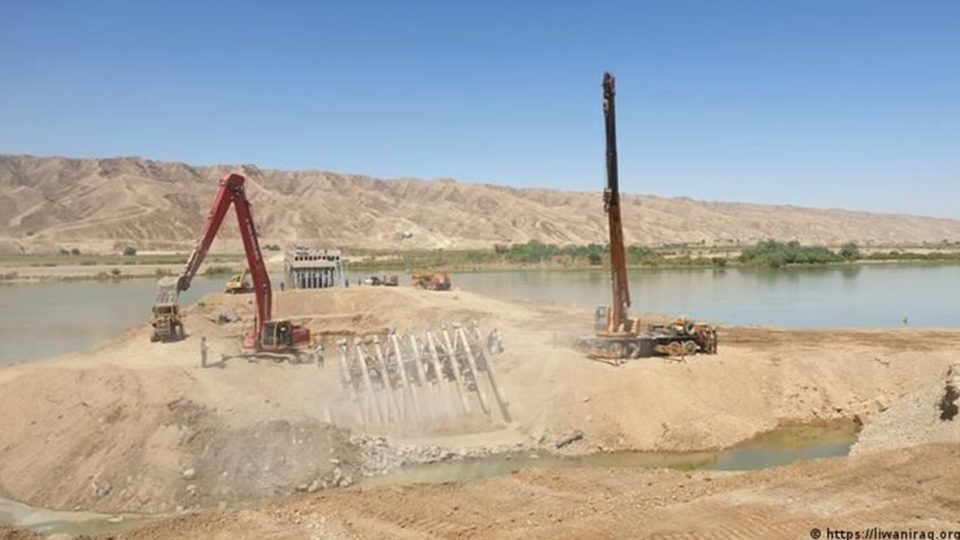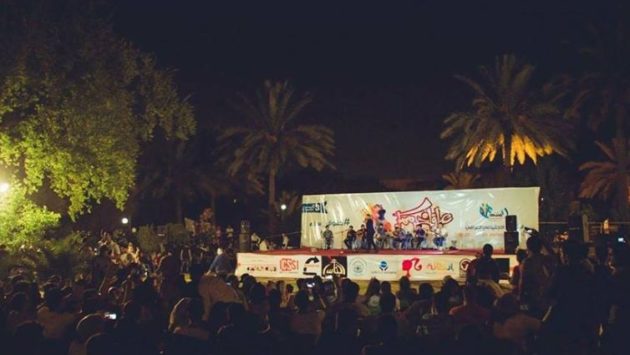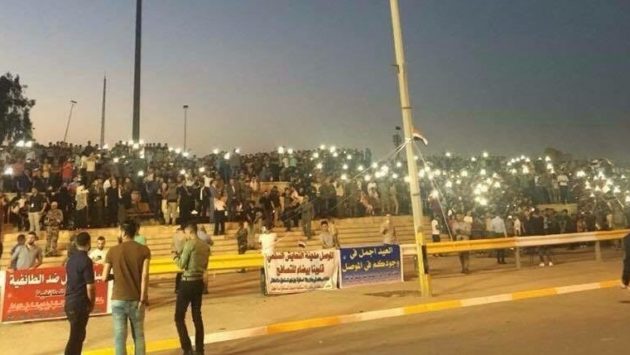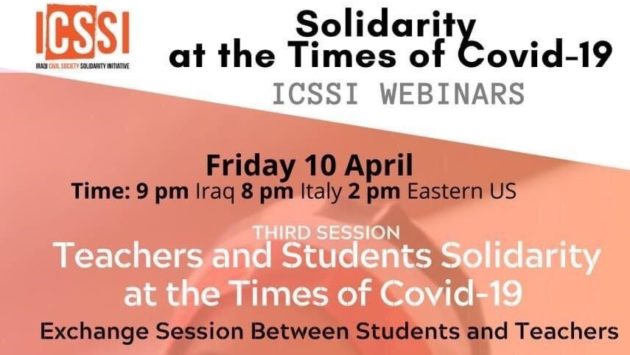The Decision Maker and the benefits that are envisaged from finalising the Makhool Dam (3.3)
It is difficult to know all the benefits envisaged from finalising this dam. All available information highlights the importance of this project, and how huge it is, describing is as the greatest project since 2003. However, this argument only addresses the general concept of the dam and repeats what is already known.
The fact is, the Makhool dam is an old project, it did not originate in the year 2000, as the rumours say. In fact the idea goes back 100 years since the royal rule.1 It is based on benefiting from the geography of the area, especially the mountain chain of Makhool. All the available information points out that “Techno Broom” Soviet Foundation (at the time), are the one who applied to the Iraqi Planning committee (currently, The ministry of planning) to conduct a study regarding the location of the dam and its capacity, also to include information about other dams like Al Fathah dam.2 Mr. Awn Dhiab confirmed by saying, ‘the foundation of the dam was 15% completed but the Iraqi invasion of Kuwait in 1990 stopped the soil work’.3 Mr. Dhiab, (who appears to be in support of finalising the dam), also pointed out that the Ministries’ companies will handle the finishing of the soil work, but the electric power supply station and other works it will need international specialised companies.4
The worst aspect of all that has been mentioned so far, is that the Iraqi water resources did not list their plans since 2003, and this is what the ex minister Al-Janabi confirmed in a TV interview, when he mentioned that both ex-Ministers – Dr. Lateef Rasheed and Dr. Muhannad Al-Saady, had cancelled the dam from the projects list, and so did the Minister that came after Mr. Mohsen Al-Shimmary, reaching Mr. Al-Janabi.5 The reason for not listing this large dam or the new dams, is because Iraq has water storages functioning under the desired level, and it does not need new storages. In the middle of 2018, the ex Prime Minister, Haider Al-Abadi, also explained it by saying that “the country doesn’t need to build new dams, because the dams that we already had did not reach the full capacity level in the first place”.6
On the above point, he is right, as the large dams are built for water storing purposes, and that’s the way it is with Makhool dam. This is the exact thing that the SWLRI strategy had decided. Mr. Al-Abadi talked to the press and the crowd and explained if we had overflowing water, it is the right time then to discuss the need of constructing new dams.7
Estimations say that Iraq has lost 30% of its water flow in Tigris and Euphrates rivers in the last number of years, and it is expected that this loss will increase up to 60% in future.8 This continuous decrease in water import, is a fact that the decision maker should not ignore.
In July 2021, Liwan Organisation for culture and development which is an Iraqi N.G.O, announced in partnership with the International Organisation for Migration (IOM), that they will document and analyse the expected humanitarian impact from building the dam and the impact on the communities based in Kirkuk and Saladin, in addition, they will document and analyse its impact on the cultural and geographic scene.9 The study sums up that the reality is that the local communities will be effected on a large scale if the dam is finalised.
In June 2022, Save the Tigris campaign, which is based in Amsterdam (Holland), in partnership with Humat Dijlah Iraqi Association, issued a shared report about the impact of Makhool dam entitled “Makhool dam and its Environmental, Cultural and Social Impacts”. The report which was widely spread around on social media10, highlighted the environmental, cultural and social impacts of this dam. It concluded that Makhool dam “will put the environmental system and the surrounding environment, in an unbalanced status, by drowning the tops of the rivers and reducing the water flow in the stream direction, which will negatively impact the water quality. It will also reduce the biological diversity along the Tigris river and inside the marshes in southern Iraq”. In fact, retaining more water from the Tigris river will definitely result in an increase in the thirst and drought crisis at the bottom areas of the river, south of Iraq and its marshes.
In addition to the dangerous environmental impact, the dam poses a severe threat of causing damage to parts of the International heritage site of Assyria and also threatens to put “Tukulti-Ninurta ” city completely under water, as it will demolish over 250 archaeological sites.12 Makhool dam will also lead to the loss of sustenance, as well as displace more than 100,000 people from over 40 local communities in Kirkuk and Saladin provinces, after they have only recently came back to rebuild their lives, from years of displacement due to ISIS invasions of their areas.13
The report concludes that the future cost of the Makhool dam can be considered much higher than the possible income for the dam on the ground. This is because the cost of its construction, in addition to the direct work cost, needs to include fair compensation and the cost of building housing units, for those who will be displaced, as well as considering the cost of the ongoing maintenance process on the dam.
The Iraqi Government admits that building this dam will face an infrastructural problem due to the geological nature of the land that it will be held on, which is similar to the ones that Mosul dam was built on.14 This means that Iraq is about to build a dam that is good for nothing that will need expensive and regular maintenance. This is similar to the maintenance cost of the Mosul dam and the truth of the matter is, this maintenance process should go on in the future. To explain more, in 2016 Iraq assigned “Trifi” Italian company to the maintenance process of the Mosul dam, costing up to 2 Million Dollars.15 Going back to that time there was an argument about the dam falling down, which turned into political anxiety and controversy, and drew international involvement. In order to settle the disagreement, the clerk who had a wide array of privileges, Muqtada Al Sadir, intervened to take the maintenance order from the hands of the Water Resources Minister, which he was in one way or another affiliated with Al-Sadir Mouvement, and he gave it to the Council of Ministers. Such maintenance procedures are unsustainable and it causes a big political forest with larger financial costs!
Going back to Makhool dam, after contraposition campaigns, the decision maker switched his stance tactically. For example, the media of the Ministry of Water Resources, on the 1st of 2022, posted a short story about the Minister of the Water Resources, when he headed a meeting on Makhool dam, with the “dam guiding consulting committee” and there was no written information about who the members of this committee were and what was their missions. The story went on to explain that the committee presented a detailed explanation about their visit to the “The Serbian-British Coalition Company” and they are contracted with, (according to this story), presenting the detailed design plans and taking responsibility for investigation procedures.16 Then it points out that the consulting company, will proceed to undertake the geological, physical, earthquakes and physical form investigations at the beginning of July and present solutions and suggestions to keep the archeological sites, including Assyria castle intact.17
There’s no name for this company, nor the contract that obligates them to work for the Ministry, and there is no information on its cost, its nature and time needed. The story then talks about the consulting company and its investigations, while the Ministry itself pointed that they started the actual work on the dam a year ago, specifically in the beginnings of 2021, and the argument back then was about the studies and the national capacity to supervise the design and the implementation.18
It is hard to identify the strong points of this project, but the conclusion closest to the truth is that the Iraqi decision maker today is looking for a life jacket, to escape from this complicated and intense problem. Because,the Iraqi negotiator is facing rejection from the neighbouring countries, especially Turkey and Iran, due to their plans of building dams and stream switching projects, which Iraq is paying for because it is the country where the river will settle.19 They need to escape from this complicity and find a “solution”, even if this solution was unstudied and improvised.
The climate change issues are amplifying quickly, alongside with the lack of rain and drought, in Iraq and the region in general. Instead of choosing difficult but studied options, the decision maker simulates the public opinion that it’s propagating widely, even with some academics and experts, that building large dams is the solution. This is something that I totally disagree with upon the facts that were mentioned earlier.
The continous large dam constructions includes the region and Iraq as well. The Federal Government and KRG, are planning to build more large dams in the upcoming years. Instead of the Iraqi decision maker trying to establish an opposing stand against building dams in the source countries in a logical manner, his stance is to reject more eco-wreckful large dams in Mesopotamia,and instead of that, he preferred to escape forward.
Yes, in Iraq, building large dams is an escape forward process, and a waste of money, and that’s if some people disagree about it, it won’t be Makhool dam.
This is an invitation to stop constructing the dam and to use the resources to give life to the priorities that the SWLRI strategy has suggested, and to focus on the real priorities related to rain protection from contamination sources and other violations, as well as the building of infrastructure for rain gathering and used water recycling. This will help the Iraqi farmer to respond to the new reality requirements. Mesopotamia is not a place for drowning agriculture anymore (a watering procedure that Iraqis got used from their Sumerian ancestors), so it is a vital time to adopt the alternative.
This is an important and urgent matter, needing a brave decision, to stop building of the dam and its waste, and to move forward.
Done
————————–
Ismael Dawood
July 2022
Authur’s Contact: ismaeel.dawood(at)gmail.com
_______________________________________________
1 Mr. Jamal Mohsen, The technical consultant of the water resources company, Al-Sharqyia TV Channel, “Qeel W Qal” Show, Makhool dam, is it a waste or a thrift. https://www.youtube.com/watch?v=TQMi5fI0nwE
2 Dr. Maddallah Mohsen, the suggested Al-Fathah dam, the geographical nature and the urban reality of “Shirqat” Diyala Magazine for scientific and educational researches, Magazine 1, Part 1, 2000.
3 Go back to the source that was mentioned in margin 5
4 Go back to the source that was mentioned in margin 5
5 Mr. Mahmood Al-Janabi, Al-Sharqiya TV channel, “Qeel W Qal” Show, Makhool dam, is it a waste or a thrift. https://www.youtube.com/watch?v=TQMi5fI0nwE
6 The Middle East Newspaper, No.14435 6th of July 2018. العبادي يتهم تركيا باستغلال سد «إليسو» سياسياً | الشرق الأوسط (aawsat.com)
7 The source above, margin No.6
8 Lossow PB PSI Water Challenges Iraq : Free Download, Borrow, and Streaming : Internet Archive
9 A press release that was posted on the organisation website by 18/7/2021 Press Release on Makhoul Dam Project (liwaniraq.org)
10 According to the responsible for promoting the report, the views has surpassed 2 Million views, Special interview in July 2022.
11 Save the Tigris Campaign with Humat Dijlah report “Makhool dam and its Environmental, cultural and social impacts”, posted on the campaign’s website: https://www.savethetigris.org/wp-content/uploads/2022/07/The_Makhoul_Dam_Report-2.pdf
12 Above Source
13 Above Source
14 Look up the Independent subject on Mr. Awn Dhiab interview mentioned in part (2.3), margin 16
15 Al-Madda Newspaper, No.3565, posted on the link: صيانة سد الموصل تكلّف 2 مليار دولار… والملفّ سحب من يد الوزير (almadapaper.net)
16 The special website for Water Resources Ministry, 2nd of July 2022, and posted on the dam Facebook page: أعلام سد مكحول (facebook.com)
17 Above Source
18 Check the dam celebration short story, mentioned above in this subject, margin 19
19 To learn more about the Iraqi negotiator with the neighbouring countries, check the Iraqi Negotiator book, 2017




